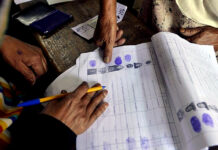
ISLAMABAD, Mar 3 (APP):Saffron being a climate resilient and low water consuming crop could be grown in the cold areas of Balochistan without conventional irrigation system.
The environment of cold regions of Balochistan including Quetta, Zhob, Killa Saifullah, Pishin, Mastung, Khuzdar and Kalat districts was the best for saffron’s cultivation and higher production.
Balochistan agriculture minister Asadullah Baloch said the department is encouraging farmers to cultivate saffron in the colder areas of the province, especially Quetta division, to yield its optimum production.
The objective of the initiative was to divert local farmers’ attention from growing traditional wheat crop and focus on cultivating high value crops, he said while talking to APP on Thursday.
It was a pilot project of agriculture department and the farming was being carried out at designated sites of the centre showing positive results with respect to germination, seed multiplication and community response, he added.
“Saffron is the world’s most expensive spice which is derived from stigmas of saffron crocus. It is used in cuisines of different countries besides many other purposes.”
While highlighting the farmers’ concerns, he said they were worried about the high cost of production, labour and cost intensive bulbs (saffron plants) and low production as each acre sowing required at least 70,000 corms, which required a lot of investment.
Baloch said the department was carrying out research and working with farmers to improve cultivation techniques.
“Saffron is harvested from full-blooming variety of the crocus flower, a hardy perennial that grows from bulbs and can withstand Balochistan’s harsh climate,” he said.
“The flowers, each containing three red stigmas that became the spice, have to be picked by hand in the early morning, before the blossoms open to the sun. The suitable time for plantation of saffron was early April to late September in Balochistan, but the mid of July was the perfect time.”
After plucking, the flowers were dried and the stigmas separated later. Harvesters must wear clean clothes, gloves and masks, because the slightest odors could be absorbed by the flower, reducing the quality of the spice,” he said while sharing the techniques for raising saffron produce.
Saffron cultivation was very simple and accessible to anyone, he said adding, it was a money making plant, and people should grow it.
The dried saffron’s yield varied from four to 10 kg per hectare, which primarily depended upon the management practices followed and the climatic conditions.
The price of product very much depended on the quality of the produce, which could fetch as much as $ 800 per kg.